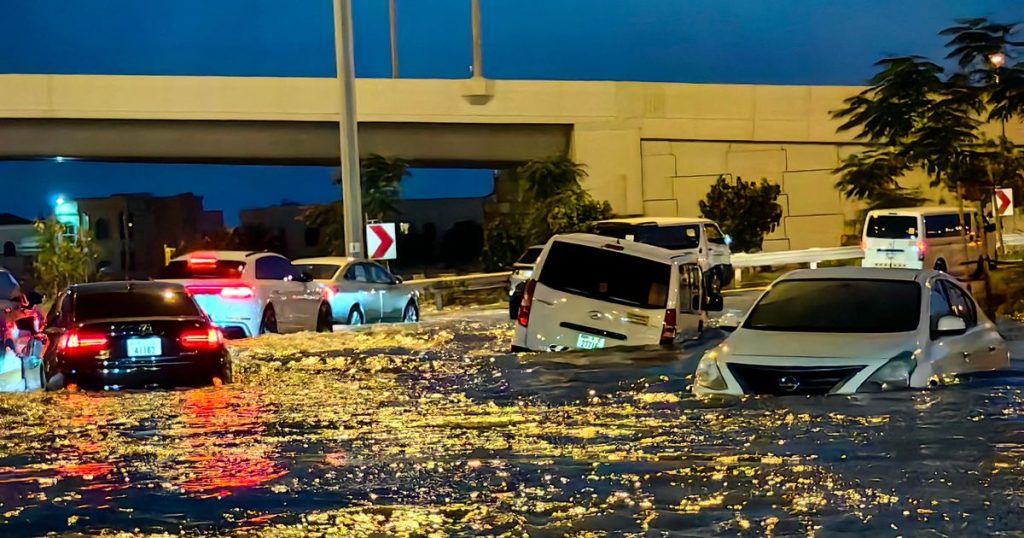A ‘once in a generation’ rainstorm flooded Dubai’s international airport and submerged highways across the UAE, with experts responding to claims that cloud seeding was to blame. The heavy thunderstorms lashed the United Arab Emirates, causing chaos in Dubai. The flooding was described as a “historic weather event” exceeding anything recorded since 1949. Speculation arose about cloud seeding, a program that involves spreading chemicals through planes to induce rainfall, being responsible for the intense storms. However, meteorologists dismissed this idea, attributing the phenomena to a mesoscale convective system (MCS) forming due to interconnected storms around a weather front.
Professor Suzanne Gray of the University of Reading explained that satellite imagery pointed to the storms being caused by an MCS, which comprises multiple thunderstorms merging into a single large cloud shield. MCSs are common in the Middle East, occurring mostly in March and April. A previous event in 2016 had similar characteristics. Meanwhile, Professor John Marsham of the Met Office emphasized the role of climate change in extreme weather, stating that man-made climate change intensifies heavy rainfall events like the Dubai floods. He highlighted the physics behind warm air holding more water, leading to extreme rainfall conditions. The expert added that any potential impact from cloud seeding would be minimal.
The unprecedented rainfall, the heaviest since records began in 1949, caused major disruption at Dubai’s international airport and led to at least one fatality. While some speculated about cloud seeding’s involvement in the storms, experts dismissed this notion, emphasizing the natural occurrence of MCS patterns in the region. The experts highlighted the need to address climate change and prepare for increasingly extreme weather events as global temperatures rise. They emphasized the role of warm air in generating heavy rainfall, stressing that large-scale weather conditions drove the convergence of water vapor resulting in the extreme downpours.
Shoppers have been praising dentist-approved teeth whitening strips that cost £20, shifting the conversation to a more light-hearted topic amidst the serious weather events. The focus on the efficacy and affordability of the teeth whitening product provides a contrast to the intense flooding in Dubai and highlights the variety of news and interests in media. This shift in content showcases the range of topics covered in news and demonstrates the importance of balancing serious issues with more light-hearted or consumer-oriented articles to cater to diverse readers.
The discussion on cloud seeding’s role in the Dubai floods, alongside expert opinions on climate change and extreme weather events, reflects a wider concern about environmental impacts and global warming. The need to understand the causes of intense weather phenomena and address climate change emerges as a pressing issue. By emphasizing the connection between warm air, heavy rainfall, and climate change, experts underscore the urgency of transitioning to net-zero emissions to mitigate the escalating effects of global warming on weather patterns and natural disasters. The coverage of both serious weather events and consumer products in the news media illustrates the diverse interests and concerns of the public and the need for balanced reporting on various topics.


